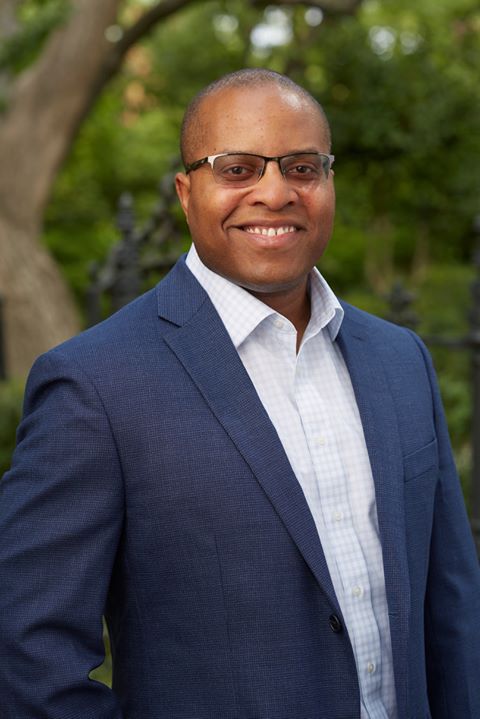(Editor’s Note: What follows is the first installment of a four-part series by guest columnist Ben Green aimed at charting a pathway forward for the Columbia, South Carolina Metropolitan Statistical Area as it responds to the coronavirus pandemic. As each of the next three installments are published on our news outlet in the coming days, we will be providing hyperlinks to the complete series below).
by BEN GREEN || My fellow citizens of the Columbia, SC Metropolitan Statistical Area (MSA) (Calhoun, Fairfield, Kershaw, Lexington, Richland, and Saluda County),
The U.S. Congress just passed a Covid-19 economic stimulus response bill, so tens of millions of dollars are on the way to our region. In addition, the City of Columbia and Richland County are injecting $6.5 million and $1.5 million respectively into the economy in response to this economic downturn. This is good news, but these are one-time cash infusions. How can we a) multiply this cash injection by 20? b) set this region up for long-term growth & prosperity? These are critical questions.
Before we dig in to how this can be done, I have three requests. Please:
- Drop everything you’re doing and read the entire Midlands Competitiveness Report.
- Think about collective goals. Not sure about y’all, but my goals for every citizen of the Columbia region are Freedom, Happiness, Health, Wealth, and Opportunity for everyone. What are yours?
- Forget EVERYTHING you know or assume about our local borders, divisions, history, and politics.
From there, let’s begin!
Columbia MSA’s Assets: The Great News
The Columbia MSA is stacked in terms of assets relative to its peers. We have the state capital, a flagship research university, private colleges, and Fort Jackson. We have a world-class zoo, museums and family attractions, state parks, and huge lakes. We have banking, legal, and insurance assets and expertise.
To top it off, when it comes to geopolitical and logistical importance, we’re the equivalent of Shaquille O’Neal on steroids trying to make the NBA. (In other words, we’re a shoe-in.) How so? We have:
- Access to 75 percent of the US population within a day’s drive
- Access to 3 ports within a 3-hour drive that allow us to export to all international markets
- Access to more than 5 federal interstates within a 60-mile drive, as well as multiple train lines
- Access to 2 inland ports within a 1.5 hour drive (in Greer and Dillon)
- A major hub for UPS at the Columbia metro airport.
These are reasons that Starbucks, Amazon, and others have located distribution facilities in our region.
We’re as well-positioned to prosper as some of the leading cities I’ve visited in the world with similar characteristics like Singapore and Panama City, Panama. Simply put, we’re blessed.
The Situation Pre-COVID-19
However, prior to the Covid-19 impact, this region was lagging our Southeastern peers. Consider:
- Regional GDP growth had flatlined and was trending to a negative number
- Average wages were below even the South Carolina state average
- We ranked bottom (10th out of 10) for talent attraction, development, and retention
- We had 2x the national violent crime rate
- We ranked bottom (10th out of 10) in the Gallup Wellbeing Index (against the likes of Greensboro, Augusta, and Knoxville)
Additionally, the City of Columbia & Richland County has some of the highest industrial tax rates in the country, and the City of Columbia has one of the highest sales tax rates in the country.
Before Covid-19, our economy, especially in Richland County/City of Columbia, was basically in a death spiral. This was evidenced, and partly enhanced, by the fact that we lost 10 corporate headquarters in the last 2 years including SCANA, Palmetto Health, and Spirit Telecom. CAE airport was facing extreme competition from Greenville, Charleston, and Charlotte’s $5 billion doubling of capacity. And given the rise of cities like Augusta (expansion of Fort Gordon’s cybersecurity command) and Spartanburg (manufacturing growth), we were hurtling towards irrelevance by the year 2030. In short, “The trend was not our friend.” Covid-19 has potentially accelerated these trends.
Post-COVID-19
How much of our local economy is at risk? For the 12,000+ people that have been already laid off, things are very serious, but if this miraculously passes in 2 weeks, it may be a bump in the road to recovery.
If this saga lasts for 4-plus weeks, this could be a “Fukushima earthquake/ tsunami/ nuclear meltdown”-level event for this region. I was in Tokyo when Fukushima hit. It was a very bad experience, but it was a local one. Economically speaking, the slow motion train crash that is Covid-19 will dwarf Fukushima’s impact.
Consider the four main economic drivers of our regional economy:
- State & local government: The state was estimating a $2+ billion budget surplus. On a macroeconomic level, however, SC is heavily dependent on tourism, international trade, and big ticket manufacturing items like autos and airplanes. In the short to intermediate term, that doesn’t bode well for the state economy, and that surplus may have gone “poof” overnight. From 2009 – 2014, state and local government spending fell, and thousands of state and local jobs were eliminated in SC. If we enter another prolonged recession, history may repeat itself.
- Higher education: With the effective end of the semester, over 35,000 UofSC and private college students have been sent back home, taking their discretionary spending with them. Seemingly half of downtown Columbia/Cayce has student housing and additional development going up as we speak. If Covid-19 disruption stretches into the fall, you can imagine the economic and tax revenue impact that will have on the Columbia region.
- Fort Jackson: Weekly graduations and the hospitality revenue that come with them have stopped. The Department of Defense (DOD) may stop new troop arrivals at Fort Jackson. This year’s DOD budget was $680 billion, while the CDC’s budget was $12 billion. After Covid-19, it’s likely that biological, cybersecurity, and other unconventional threats will get more funding. In that case, Augusta and its Cybersecurity Command at Fort Gordon, with 5,000 new employees slated for arrival over the next ten years, may be much better positioned for growth than us.
- Retail Stores & Restaurants: Prior to Covid-19, if you took a ride through large portions of the MSA including Two Notch, Broad River, and Bush River Roads, and even the more recently built Sandhills complex in Northeast Columbia, there were a lot of run down and vacant buildings. This trend will likely intensify with the rise of Amazon and the shift to take-out dining.
The Solutions: Meeting the Challenge
So how did we go from being the potential All-Pro “Beast of the Southeast” to being in a position in 2020 where we’re the equivalent of a benchwarmer on a middle school team?
Two words: Taxes and Structure.
Our taxes our too high in the geographic heart of the region, the City of Columbia/Richland County, specifically.
And these political institutions, along with some of our economic development organizations and non-profit organizations, are not structured efficiently, nor are they aligned with the best long-term interests of citizens and stakeholders in mind. The general structures of Richland County and the City of Columbia haven’t been changed in 235 years. It’s time for an upgrade.
To meet current and long-term economic challenges, and to allow the Columbia MSA to reach its highest potential, we must have a brutally honest, unconventional dialogue about the path forward. We must take inventory of our assets. And we must implement 3 specific strategies I call the “3 C’s”.
In 2013, a dozen of us from the Chambers (Columbia and Lexington) held meetings to set a path forward for greater regional collaboration. In early 2014, as a promise to former Columbia Chamber CEO Ike McLeese, we visited Des Moines, Iowa. We were blown away by how they had taken advantage of their assets and united what was a fractured region. We returned with a specific, clear playbook. In September 2014, a group of 30 met, joined by representatives from Charleston Regional Development and the Cradle to Career education group to review regional plans and finalize the regional strategy. The year is now 2020, and at best we have taken action on 20 percent of this playbook. It’s time to finish the job. The first step in finishing the job and taking our region to new heights is focused consolidation.
(Editor’s Note: Stay tuned for installments II, III and IV in the days to come).
ABOUT THE AUTHOR …
(Via: Provided)
Ben Green is president and chief operating officer of Insurance Advantage. He’s a former South Carolina business recruiter who opened up the S.C. Department of Commerce’s Japanese office in 2012. Since then, South Carolina has received $2.5 billion in investment from Japan and Korea. Approximately four percent of that investment has been placed in the Midlands.
***
WANNA SOUND OFF?
Got something you’d like to say in response to one of our articles? Or an issue you’d like to proactively address? We have an open microphone policy here at FITSNews! Submit your letter to the editor (or guest column) via email HERE. Got a tip for a story? CLICK HERE. Got a technical question or a glitch to report? CLICK HERE.
(VIA: GETTY IMAGES)


